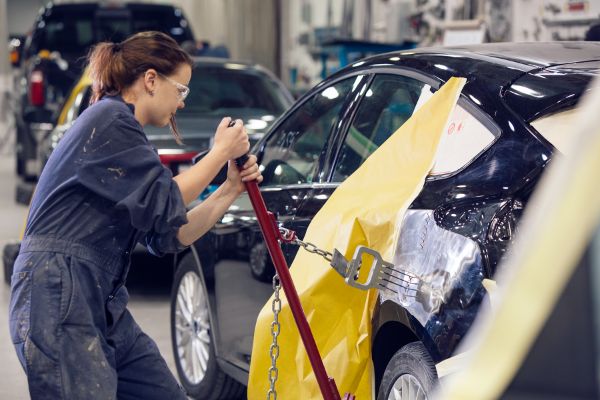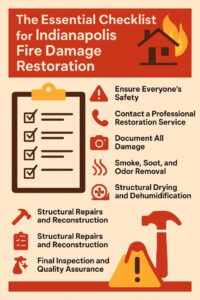Choosing the correct equipment is the difference in construction and infrastructure undertakings. The most visible equipment on construction sites are bulldozers and a wheel loader. Understanding the difference between them will allow you to choose the right machine for your undertaking and make your venture more efficient at a lower cost.
What Is a Bulldozer?
A bulldozer is a large machine with a huge, wide blade mounted on the front. It travels on smooth tracks, distributing the weight of the machine across a broad base. This provides bulldozers with great traction and stability, particularly on rough, uneven, or soft ground where wheeled equipment will struggle.
Bulldozers are primarily employed in earthmoving operations like displacing earth, boulders, and debris. They grade surfaces, clear land and building sites.
What Is a Wheel Loader?
A wheel loader is a wheeled machine with a heavy bucket on a hydraulic boom. They dig, load, and transport sand, gravel, and trash. They are most often used to load trucks, put material in a pile, and clean up. The biggest benefit is that attachments can be easily switched over, i.e., forks, grapples, or snowplows, so they can be versatile in most cases.
Key Differences Between the Two Machines
Design and Mobility
The main difference between bulldozers and wheel loaders is how they are propelled. Bulldozers possess tracks, which provide good traction on soft or rough ground. This allows them to perform nicely in mud, loose soil, or rocky terrain.
Wheels enable wheel loaders to travel faster and move more smoothly across paved or compacted surfaces. This makes wheel loaders perfect for navigating quickly around a site, particularly when operations involve moving materials longer distances.
Functional Capabilities
Large volumes of earth are graded and pushed using bulldozers. They can move dirt, level the ground, and remove obstacles with their front blade. This makes bulldozers the ideal option for clearing land, heavy earthmoving, and preparing road bases.
Wheel loaders work well for moving loose materials and scooping them up. For accurate truck loading or stockpiling, they have hydraulic arms and buckets. They are helpful for loading operations, site cleanup, and material handling.
Versatility and Attachments
Wheel loaders are notable for being versatile. They can be used with an array of attachments other than the bucket, including pallet forks, grapples, and brooms. This versatility allows them to perform a variety of tasks without requiring multiple machines.
Bulldozers lack as many attachments, but they can be equipped with specialized blades and rippers. Rippers break up heavy soil or stone, so bulldozers can be beneficial in prepping difficult ground for future projects.
Relevance to Current Construction Trends
Growing Infrastructure Demands
The construction industry is growing rapidly worldwide. Urbanization, infrastructure upgrades, and large projects are increasing the need for heavy machinery.
Market figures reveal that bulldozer sales are continuously increasing, with values predicted to rise from around $6.5 billion in 2019 to more than $10 billion by 2027. The wheel loader market is growing even faster, with a compound annual growth rate of almost 9%. This growth highlights how both machines are crucial to modern construction.
Efficiency and Productivity
Productivity is a high consideration on job sites. Wheel loaders help by transporting material quickly and switching attachments to meet different requirements. Their quickness and adaptability save time.
Bulldozers introduce potent pushing power and stability, shortening the time it takes to move earth and grade. Their ruggedness equals fewer breakdowns and more even work, particularly on tough ground.
Cost and Maintenance
Cost is always a factor. Wheel loaders are cheaper to maintain than bulldozer tracks because their tires are cheaper and simpler to replace. They are also more fuel-efficient.
Bulldozers are more expensive to maintain with track wear and tear. Their durability and ability to work in poor conditions, however, frequently justify the extra maintenance costs.
Choosing the Right Machine for Your Project
Assessing Project Needs
Start by considering your project requirements. If you have to haul and grade large amounts of soil on hard or soft surfaces, a bulldozer will likely be your best bet.
If you’re in the process of loading, hauling material, or cleaning up on solid terrain, a wheel loader will be your best bet. Think about the terrain, job type, and size of the material to haul.
Budget and Resources
Your budget may decide for you. Wheel loaders will provide lower total cost of ownership for small or multi-task projects. Bulldozers, while more expensive to buy and maintain, provide long-term advantages for heavy-use earthmoving.
Also, look into renting if you only require equipment for a short duration. Renting can be affordable for small projects or specialized applications.
Planning for the Future
Consider upcoming projects. Wheel loaders’ adaptability through attachments makes them useful for a variety of jobs and is a sound long-term investment.
Bulldozers, while less adaptable, are still useful for heavy earthmoving applications. Buying machines to be upgraded or modified keeps you ready to face evolving project requirements.
Key Takeaway
Wheel loaders and bulldozers both have crucial applications on building sites, but each is suited for a different job. Bulldozers are better suited for heavy earthmoving and grading over rugged terrain. Wheel loaders are more effective and adaptable for material handling and loading on hard ground.
Selecting the appropriate machine is based on your project’s terrain, tasks, budget, and future requirements. Knowing their strengths and differences will enable you to choose the equipment that maximizes productivity, keeps costs under control, and makes your project successful.









